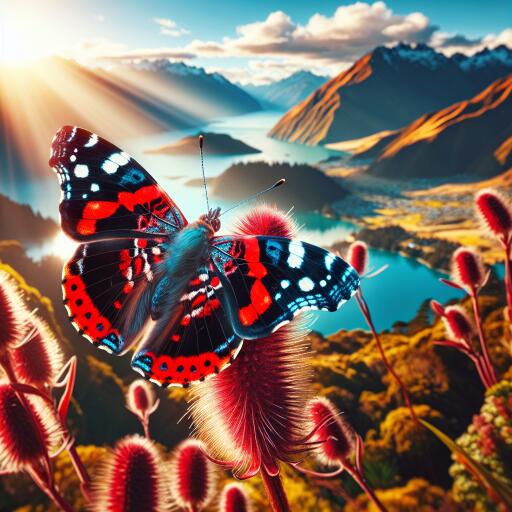
New Zealand Crowns Red Admiral Butterfly as Bug of Year
In New Zealand, where Valentine’s Day is a time for expressing love, the nation has shown its affection for one of its smallest inhabitants. The red admiral butterfly, a vision of black and vibrant red, has fluttered its way into hearts to become the Bug of the Year. Garnering 2,275 votes in a contest that attracted nearly 17,000 participants, both locally and globally, this butterfly has soared to the top spot, celebrating the island’s unique biodiversity.
Securing its victory in the competition’s second run, the red admiral butterfly has succeeded where last year’s champion, the native bee, left off. It wasn’t an easy win, though, with competitors such as the Mt Arthur giant wētā, the velvet worm, and the glowworm close on its wings, each securing substantial public support.
The fascinating initiative, launched by the Entomological Society of New Zealand, aims to bring the spotlight onto the often-overlooked insect life of Aotearoa. With more than 20,000 invertebrate species calling New Zealand home, from the showy butterfly to the elusive velvet worm, the goal is to foster greater public interest and action towards preserving these creatures, many of which face threats to their survival.
The red admiral, or kahukura, which means “red cloak” in Māori, stands out with its striking coloration. Unique to New Zealand, this butterfly shares its environment with a closely related species, the yellow admiral, albeit the latter species also exists in Australia. New Zealand is a haven for lepidopterists, with over 90% of its 2,000 butterfly and moth species being endemic. The line between butterflies and moths blurs here, as many so-called moths are day-flying and just as vividly colored as their butterfly counterparts.
Butterflies and moths play pivotal roles in ecosystems as pollinators and as food for other species. However, like many butterflies globally, the red admiral’s numbers are dwindling. To combat this, conservation efforts encourage gardeners to cultivate butterfly-friendly habitats. A varied selection of nectar-rich flowers and specific host plants for caterpillars can greatly enhance pollinator health, thereby bolstering biodiversity and ecological resilience.
Research underscores the importance of native nettles as preferred egg-laying sites for red admiral butterflies, highlighting a need to balance human comfort with ecological considerations. The tree nettle, or ongaonga, is particularly favored by these caterpillars, though its painful sting often leads to its removal from human-inhabited areas.
To ensure the survival of such essential pollinators, gardeners are encouraged to adopt practices that support a rich pollinator environment. This includes mitigating threats like habitat loss, food scarcity, and pesticide usage, as well as controlling invasive predators that feast on native insects. Future considerations will include seasonal gardening tips aimed at promoting the well-being of backyard bugs, thus fostering a thriving community of native invertebrates.
Whether you’re already enchanted by bugs or are just beginning to appreciate their role in our ecosystem, it’s clear that these tiny creatures need our help. By fostering environments where invertebrates can flourish, we contribute to the overall health of New Zealand’s unique biodiversity, ensuring these treasures can be enjoyed for generations to come.





Leave a Reply